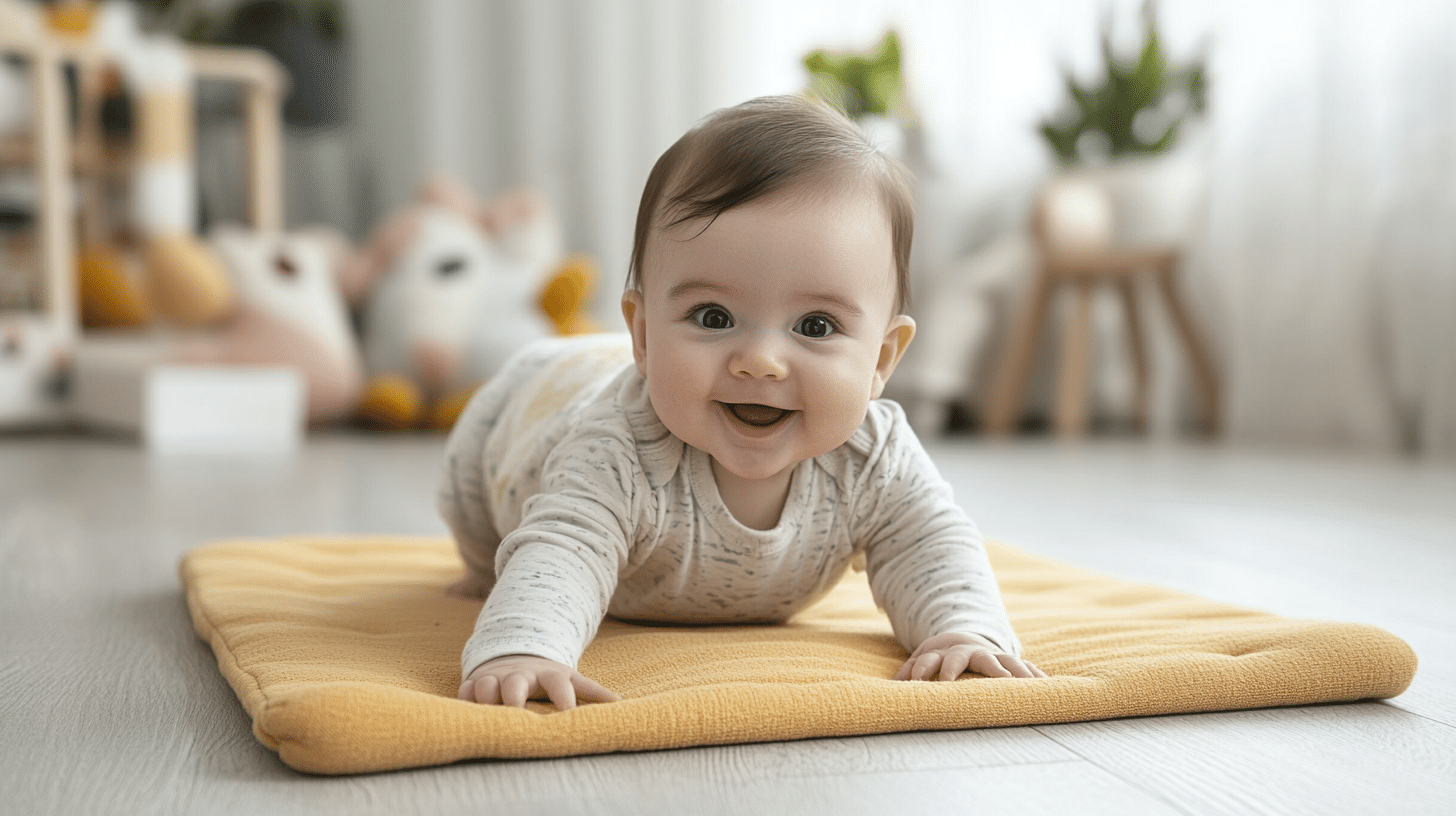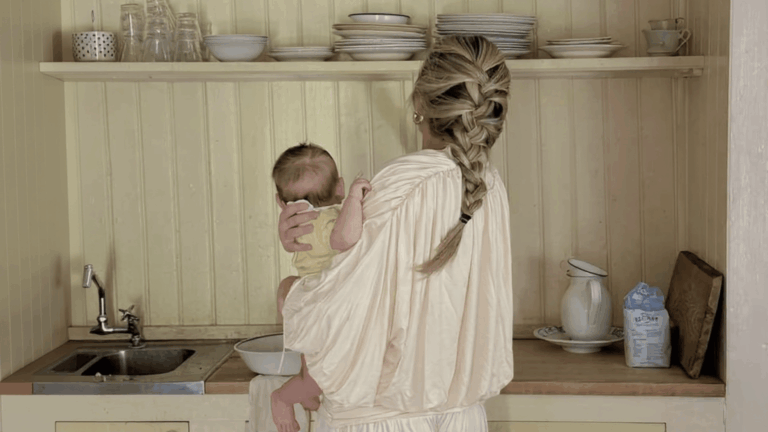Babies move in mysterious ways.
You put your little one down on their back, turn around for a minute, and suddenly they’re on their side! As a new parent, this can spark worry. Is it safe? Should you flip them back? What’s going on with their tiny bodies?
When your newborn rolls to the side while sleeping, it’s actually quite common.
This article will explain what’s happening with your baby’s sleep positions, when you should be concerned, and how to create the safest sleep setup for your little one.
Why Your Newborn Rolls to Their Side While Sleeping?
Babies often roll to their sides while sleeping due to several natural factors. Their bodies still follow patterns from their time in the womb, where curling up was the norm.
Common reasons include:
- Natural reflexes that cause head turning, with the body following
- Large heads that can tilt on flat surfaces
- Simple comfort preferences
- Early motor skill development
- Possible relief from gas or reflux
- Movement toward warmth or interesting sights
Parents should know that these side-rolling habits are typically normal parts of growth.
These sleep positions often change as the baby develops new skills. While this behavior rarely signals problems, understanding the causes helps parents know when something might need medical attention.
Is It Safe If My Newborn Rolls to Their Side?

When your baby rolls to their side during sleep, it’s normal to feel concerned. Here’s what you need to know about safety:
For most healthy, full-term babies, occasional side-rolling isn’t a major concern. However, safety guidelines still recommend placing babies on their backs for sleep.
Why back sleeping remains the gold standard:
- Back sleeping has been shown to reduce the risk of Sudden Infant Death Syndrome (SIDS).
- It keeps airways clear and open.
- It’s the position recommended by pediatricians worldwide.
When side-rolling happens naturally:
- Your baby has good head control.
- They can move freely.
- There are no loose items, blankets, or toys in the crib.
When to be more cautious:
- Premature
- Has breathing issues
- Less than 4 months old
For these babies, when your newborn rolls to the side while sleeping, gently returning them to their back is a good idea.
The most important safety rule: always start by placing your baby on their back for sleep, even if they end up rolling to their side later.
Risks Associated with Side Sleeping for Newborns
| Risk | Why It Matters | What Parents Can Do |
|---|---|---|
| Breathing Problems | Baby’s face might press against bedding |
|
| Higher SIDS Risk |
Side position can lead to stomach sleeping |
|
| Limited Movement | Newborns may get “stuck” in positions |
|
| Head Shape Issues | Constant side sleeping may affect head shape |
|
| Reflux Confusion | Side sleeping isn’t safer for reflux |
|
Remember: Back sleeping remains the safest position for all babies.
Safe Sleep Practices for Newborns

Creating a safe sleep space is one of the most important things you can do for your baby. These guidelines help protect your little one, even when they move during sleep.
- Back position: Place your baby on their back for every sleep time, even if your newborn rolls to the side while sleeping later on.
- Crib safety: Use a firm mattress with a fitted sheet only. Do not use bumpers, blankets, stuffed animals, or pillows in the sleep area.
- Room sharing: Keep baby’s crib or bassinet in your room for at least the first six months, but on a separate sleep surface from your bed.
- Sleep clothing: Dress your baby in a wearable blanket or sleep sack instead of using loose covers that could shift if your newborn rolls to their side.
- Firm surface: Always use a safety-approved crib, bassinet, or portable crib with a firm, flat mattress to minimize gaps where the baby could get stuck.
- Temperature control: Keep the room at a comfortable temperature (68-72°F) and avoid overheating your baby with too many layers.
- Pacifier use: Consider offering a pacifier at nap time and bedtime after breastfeeding is established, as this may reduce SIDS risk.
The Bottom Line
Sleep safety matters for every baby. While it’s common for a newborn rolls to side while sleeping, understanding why it happens helps ease parent worries.
The key point to remember is simple: always start by placing your baby on their back, even if they shift later.
Trust your instincts as a parent, but also stay informed about best practices. When in doubt, talk with your pediatrician about any concerns.


















